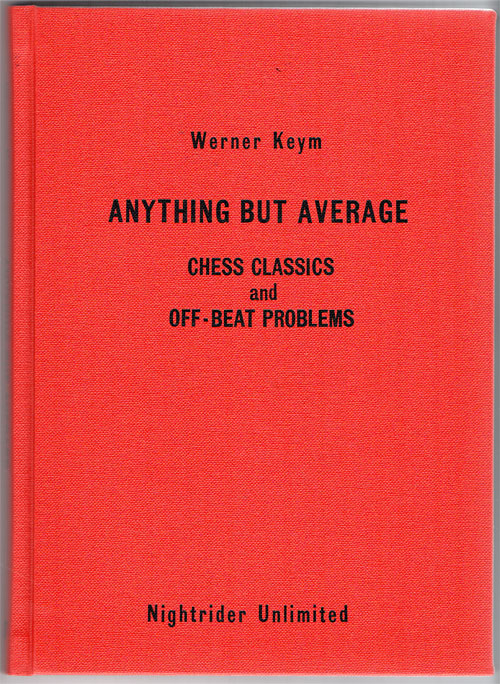The human challenge
Let us start with two pawn endings I have known for all my adult chess life. It was a pleasure to suddenly see them again in Werner Keym's book. I learnt some important basics of pawn endings from them as an amateur. Here's the deal today: try to find sound solutions on our diagram boards (where you can move pieces around). I have not switched on engines so you can think about all possible black defences. At the bottom of the page is a replayer with all positions, with the solutions and alternate lines. There you can check your ideas and analyse with an engine (fan icon below the board).
The first position needs an anti-intuitive strategy (I thought) to win. But it is the only way to victory. Incidentally once you have figured out why 1.Kc3 does not work, and are now considering 1.Kb1, remember that Black can defend with 1...a3!. What do you do then?
The second diagram by Henry Adamson impressed me no end at the beginning of my foray into chess. I remember studying and discussing it with other members of my chess club in Hamburg and understanding how much more difficult and complex pawn endings are than we had imagined. For each black defensive move there is just one white reply that avoids a draw.
No. 3 is an instructive rook manoeuvre that the second World Champion showed us (130 years ago, and four years before he won the title). It is quite astounding to see what White must do to avoid a draw and promote his pawn. Can you figure it out on the diagram above, before you check the answer on the replay board below?
No. 4 was composed by the great Alexey Troitzky five years later and is quite amazing. Please try to work out the win on our diagram board above, if you have not seen it before. Engines solve it 0.00 seconds.
No. 5 by Hermann Mattison looks, at first sight, trivially easy: 1.e7 Rxa3 2.e8Q, but try playing that on the diagram. The background engine, which I have switched on to one second a move will show you the refutation: 1...Re1+! 2.Kf6 (or Kd6) Rxe7! and the "wrong bishop" cannot win! So you must try something different. This is a study you can meaningfully solve on by playing against the engine on the diagram above. I think it will properly defend any false attempt.
No. 6 by Shaya Koslowski is our final challenge today. Again at first sight you want to play 1.g7, because after 1...Kxh7? we play 2.gxf8Q and win easily. But the board engine does not take the white rook on the second move but puts its own rook on a safe square. After that, try as you might, you will not be able to win. So you have to find something different. Need a hint? 1.g7 would work perfectly if it wasn't for the annoying white bishop on h8.
 Werner Keym: Anything but Average – Chess Classics and Off-beat Problems, is aimed at all chess lovers: players and problemists. Immortal games by Anderssen, Fischer, Kasparov, Carlsen, famous endgame studies by Barbier-Saavedra, Lasker, Troitzky, Réti etc. and classical problems of all kinds are presented and explained with additional diagrams, moreover 24 top problems elected as ‘Millennium Problems’ in 2000 and special compositions with asymmetry, castling and promotion.
Werner Keym: Anything but Average – Chess Classics and Off-beat Problems, is aimed at all chess lovers: players and problemists. Immortal games by Anderssen, Fischer, Kasparov, Carlsen, famous endgame studies by Barbier-Saavedra, Lasker, Troitzky, Réti etc. and classical problems of all kinds are presented and explained with additional diagrams, moreover 24 top problems elected as ‘Millennium Problems’ in 2000 and special compositions with asymmetry, castling and promotion.
The book has viii + 190 pages, 375 games, studies, problems, puzzles by 240 authors, 120 related problems, 180 additional diagrams. English text. Paperback: 10 € + postage, or cloth-bound for 30 € or 30 US$, plus postage Order exclusively from Nightrider Unlimited – order per e-mail: Ralf.Kraetschmer@t-online.de.
Replay all games
.jpeg)

















 Werner Keym: Anything but Average – Chess Classics and Off-beat Problems, is aimed at all chess lovers: players and problemists. Immortal games by Anderssen, Fischer, Kasparov, Carlsen, famous endgame studies by Barbier-Saavedra, Lasker, Troitzky, Réti etc. and classical problems of all kinds are presented and explained with additional diagrams, moreover 24 top problems elected as ‘Millennium Problems’ in 2000 and special compositions with asymmetry, castling and promotion.
Werner Keym: Anything but Average – Chess Classics and Off-beat Problems, is aimed at all chess lovers: players and problemists. Immortal games by Anderssen, Fischer, Kasparov, Carlsen, famous endgame studies by Barbier-Saavedra, Lasker, Troitzky, Réti etc. and classical problems of all kinds are presented and explained with additional diagrams, moreover 24 top problems elected as ‘Millennium Problems’ in 2000 and special compositions with asymmetry, castling and promotion.





